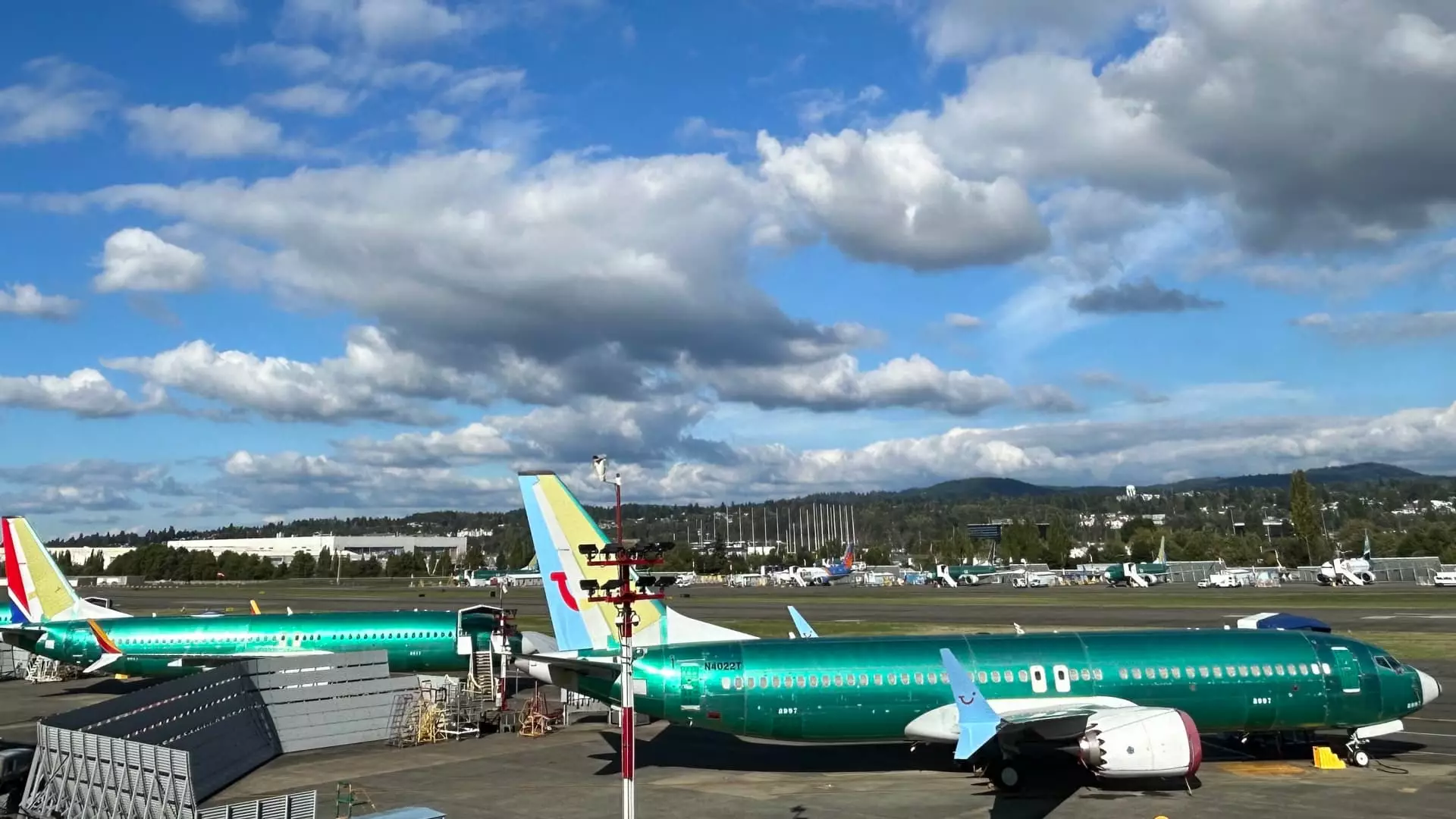In recent discussions, former President Donald Trump articulated his growing frustration over the substantial delays in the delivery of the new Boeing 747s, which are set to replace the iconic Air Force One aircraft. Originally envisioned as a project that would enhance the presidential transport fleet, this venture has now become a case study showcasing the challenges of governmental contracts in the aerospace industry. What was initially a landmark $4 billion agreement, negotiated in the nascent days of Trump’s first term, has spiraled into a saga marked by cost overruns exceeding $2 billion and a timeline that appears increasingly uncertain.
As these jets fall years behind schedule, questions abound not just about their delivery but also about the implications of these delays for presidential operations and national symbolism. The Air Force One planes, an aerial emblem of American leadership and power, have become entangled in the multifaceted challenges of modern aviation manufacturing. This situation raises concerns about the feasibility and reliability of such monumental contracts, especially in a volatile economic landscape post-COVID-19.
The Involvement of High-Profile Influences
To expedite the process, Trump’s advisor and tech entrepreneur Elon Musk has taken a hands-on approach, collaborating with Boeing in an effort to streamline the delivery of these aircraft. During a recent industrial conference, Boeing CEO Kelly Ortberg remarked on Musk’s contributions, praising his ability to discern vital technical requirements from unnecessary bureaucratic constraints that have hampered progress. Such high-profile involvement underscores the intersection of technology and traditional manufacturing processes, a juxtaposition that might provide insights into future efficiencies across various sectors.
While Musk’s narrative unfolds, Trump’s contemplation of potential alternatives—like acquiring a ready-to-fly plane—illustrates a practical approach to overcoming bureaucratic stagnation. In a world increasingly characterized by instant gratification and rapid technological shifts, the presidential fleet’s inability to adapt poses significant concerns. It suggests a broader reflection on how governmental processes often lag behind commercial and technological advancements.
The Wider Implications of Delays
The challenges faced in delivering the new Air Force One are not merely isolated issues; they mirror the disruptions experienced across the aviation industry. Following a pandemic that rattled the very foundations of global transport, Boeing has grappled with maintaining production schedules while attempting to fulfill orders from various international airlines. Disasters, such as the January 2024 door-plug blowout incident, have only exacerbated the situation, leading to leadership changes and a reassessment of operational protocols.
Yet, even amid this complexity, signs of recovery are emerging. Executives from major airlines, such as United and Southwest, have expressed a reinvigorated confidence in Boeing’s capacity to deliver planes on schedule, a sentiment that aligns with Ortberg’s assertion of an absence of supply chain issues in ramping up production for the 737 Max, the company’s flagship model. These indicators of progress present an optimistic counterpoint to the ongoing challenges associated with Air Force One’s successors, suggesting a potential turnaround and renewed commitment to reliability.
The journey toward delivering the new Air Force One aircraft provides a profound illustration of the complexities inherent in large-scale defense contracts. It spotlights not only the operational challenges faced by aerospace manufacturers but also the strategic implications for presidential transport. As the delays persist, the involvement of figures like Elon Musk highlights an innovative approach to problem-solving in an oftentimes stagnant environment, bringing a tech-centric perspective to traditional manufacturing hurdles.
Ultimately, as stakeholders navigate these turbulent waters, the hope remains that lessons learned from the Air Force One project can lead to improved processes and efficiencies in the future. The confluence of technological advancement and bureaucratic inertia may well serve as a catalyst for change, promoting a more responsive and capable aerospace industry that meets the needs of the highest office in the land.


Leave a Reply